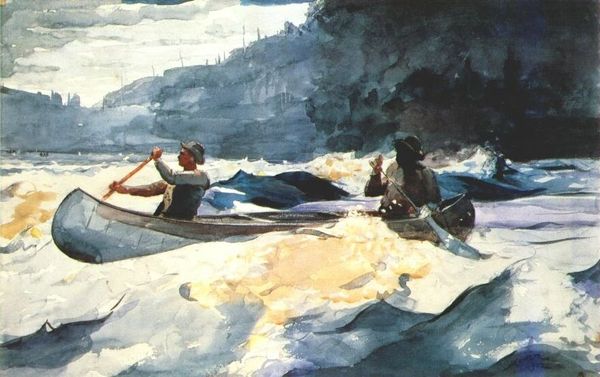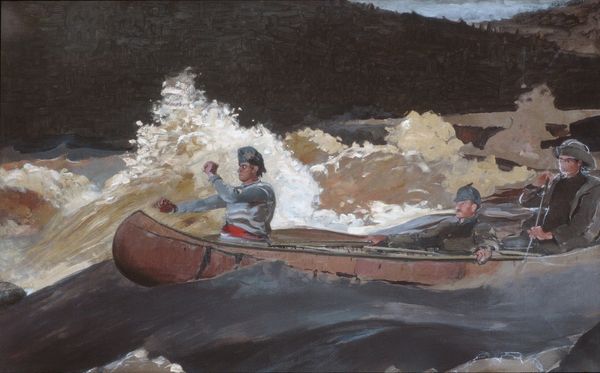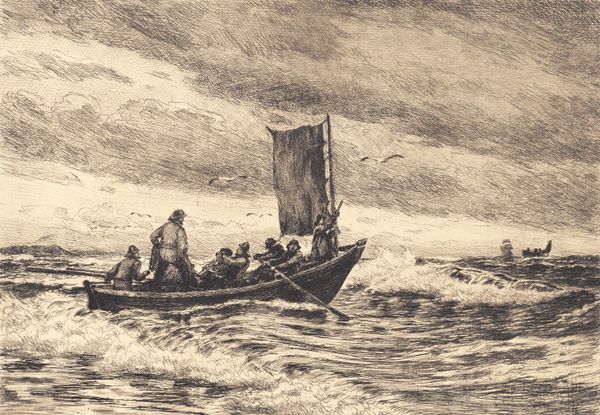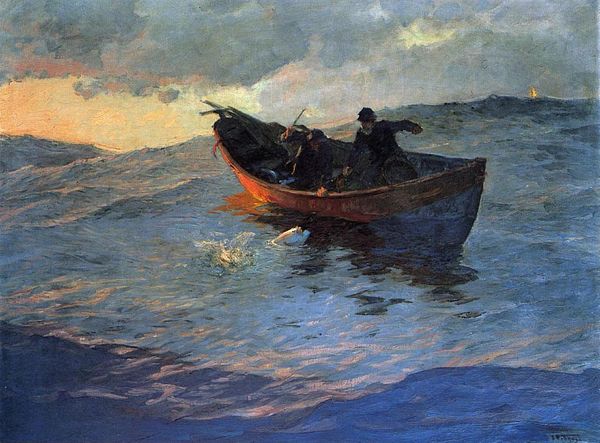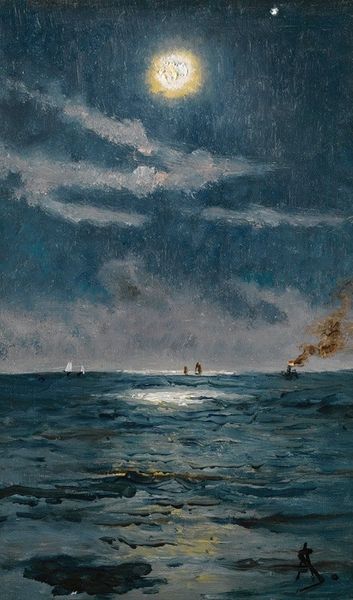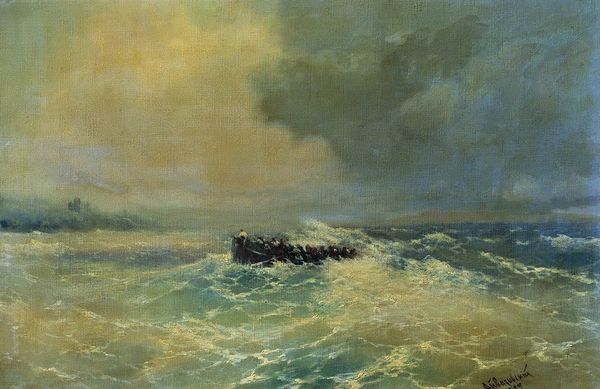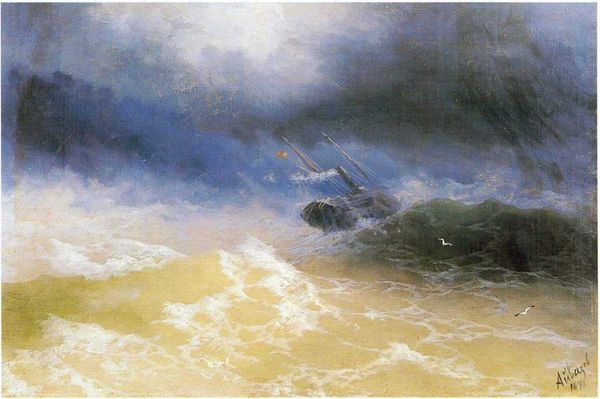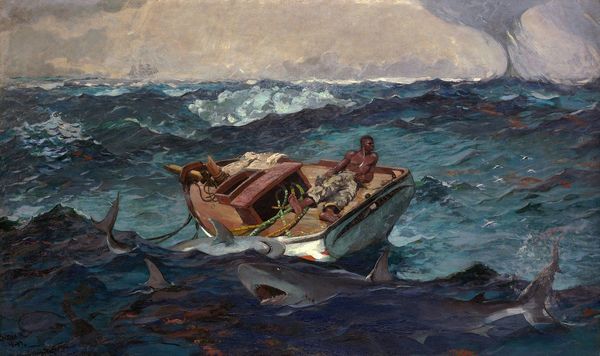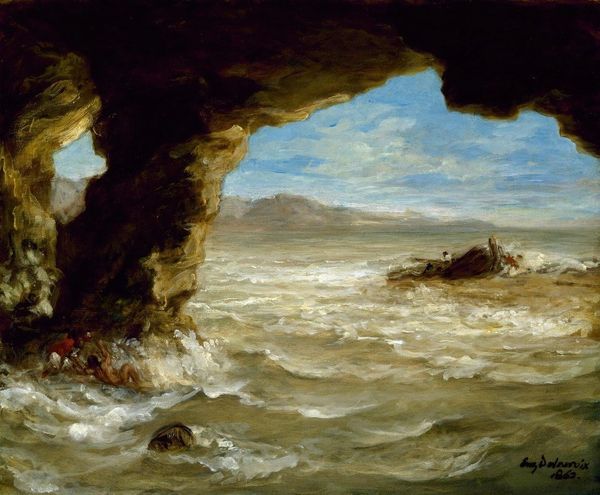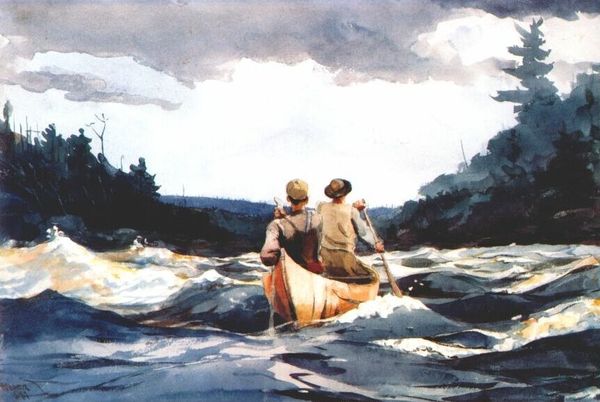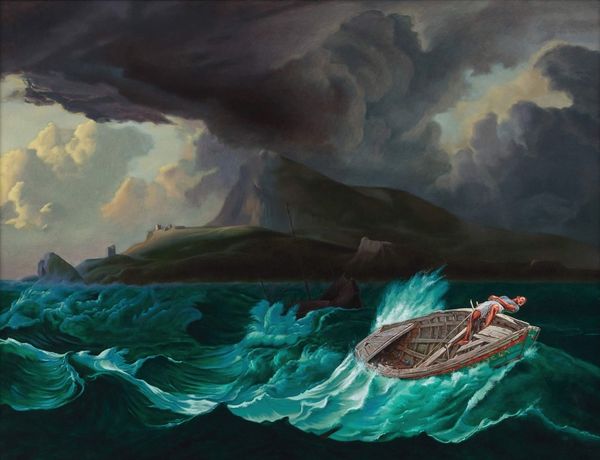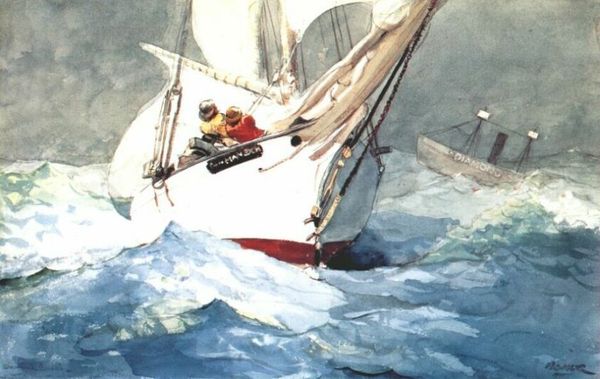
Dimensions: 50.8 x 35.2 cm
Copyright: Public domain
Curator: Winslow Homer painted "Under the Falls, the Grand Discharge" in 1895. He’s working here in watercolor, something that lent itself beautifully to capturing transient moments, don’t you think? Editor: Absolutely. My immediate impression is that Homer's illustrating a raw, visceral tension. There’s the impending storm in the sky… against that tiny canoe with its three occupants braving the churning rapids below. I think this speaks volumes about the relationship between humans and nature. Curator: I agree! You see, for Homer, the elemental struggle wasn't just pretty scenery—it mirrored something deep inside. The fishing boat isn't just trying to navigate the water; it symbolizes the challenge of humanity as a whole, trying to coexist with a dominant force that we cannot overcome. He himself, it should be noted, spent most of his life seeking adventure and solace along waterways such as the Adirondacks' Ausable River or the coasts of Maine and Florida, experiencing nature both intensely and intimately. Editor: Right, the painting prompts us to ask: What does it mean to conquer when you are completely and utterly exposed, navigating colonial practices embedded in exploiting nature as commodity. Notice that he doesn’t offer any romanticism of that violence. There's a directness, even brutality, in the face of this picturesque landscape tradition that deserves critical interrogation. What appears stunning at first sight might actually be telling an uncomfortable story! Curator: Indeed. Think about Homer's earlier works depicting rural American life; many explored complex social issues. Later, as his focus shifted towards depicting the power of the sea, I find myself reflecting on these solitary figures, these brave souls who have become a part of this vast, sublime natural system. Perhaps in them, we can witness the raw dance between the sublime and the precarious. Editor: I keep thinking of those two lone fish in the painting as allegorical reminders of their struggle; however, I would argue that perhaps our readings must shift. Instead of valorizing conquest, perhaps we see instead figures fighting for survival. Perhaps by honoring a painting such as Homer's and others who center the ecological as foundational we come to consider strategies that prioritize survival for those made vulnerable to this brutal and rapidly changing world. Curator: You've nudged me toward seeing new layers here—recognizing vulnerability where I initially perceived bravery. It really illuminates something essential about this artwork. Editor: And seeing Homer's work this way, contextualized within larger conversations, honors the complexities and paradoxes inherent in the image itself and invites continued analysis and understanding.
Comments
No comments
Be the first to comment and join the conversation on the ultimate creative platform.

